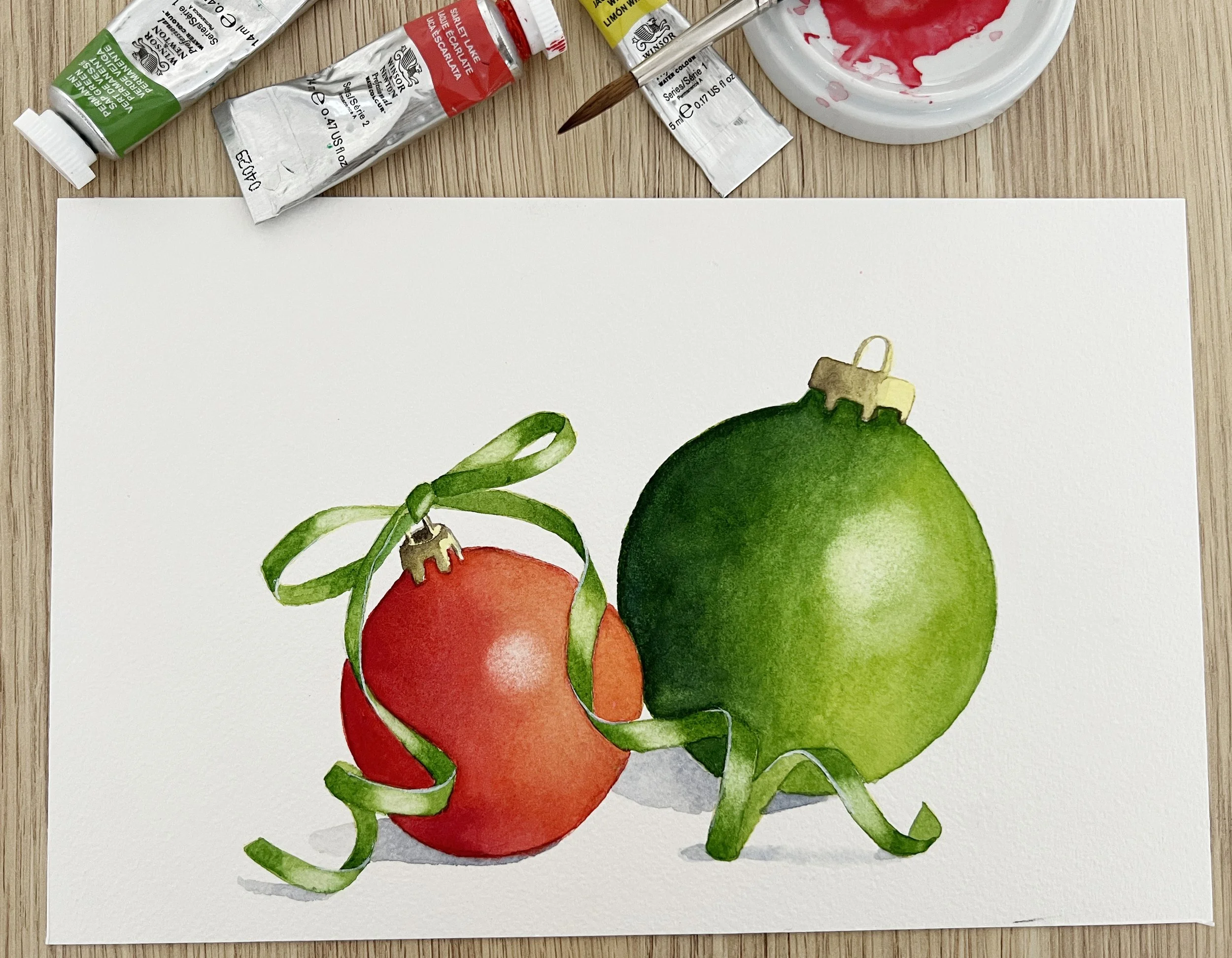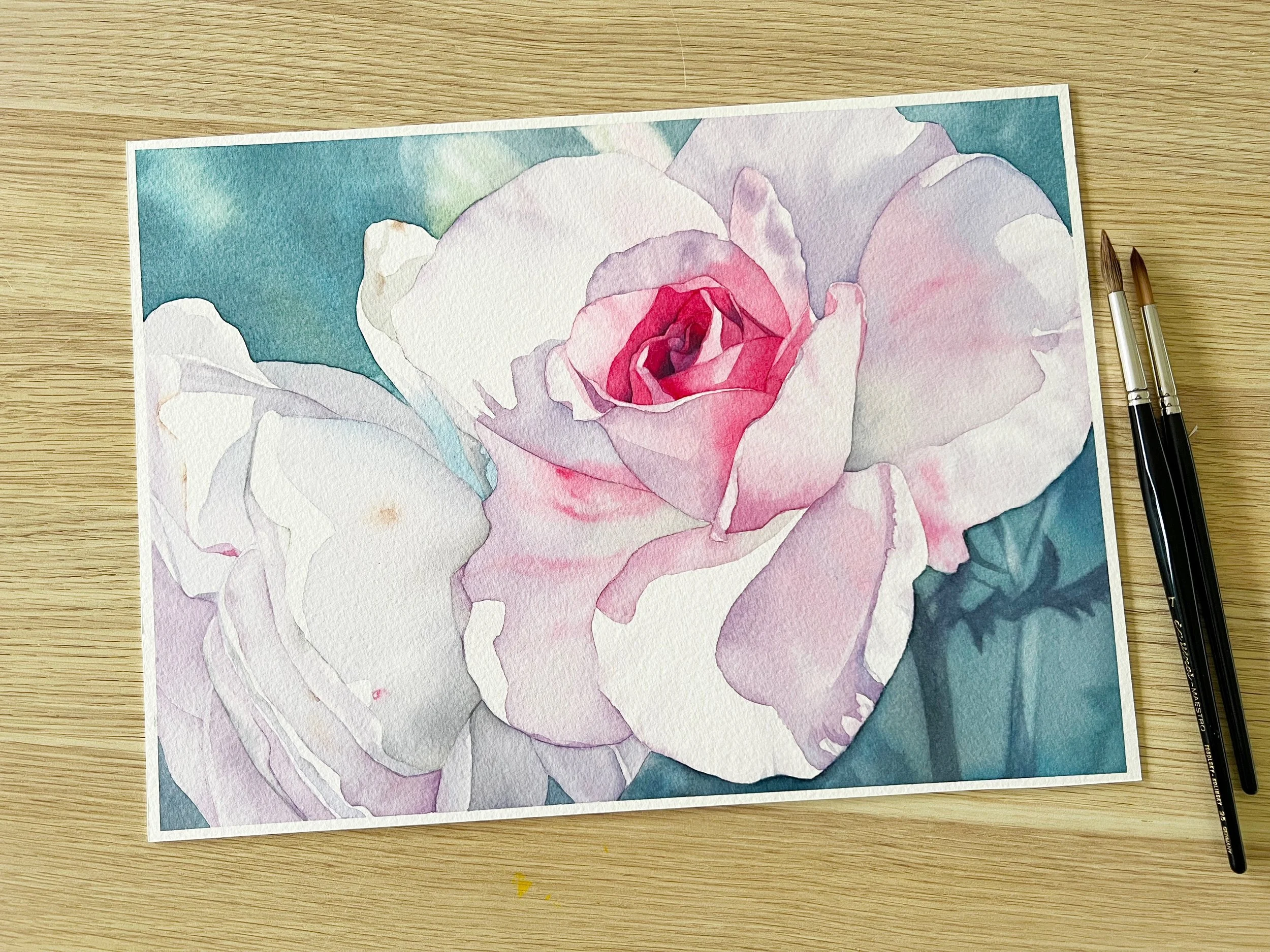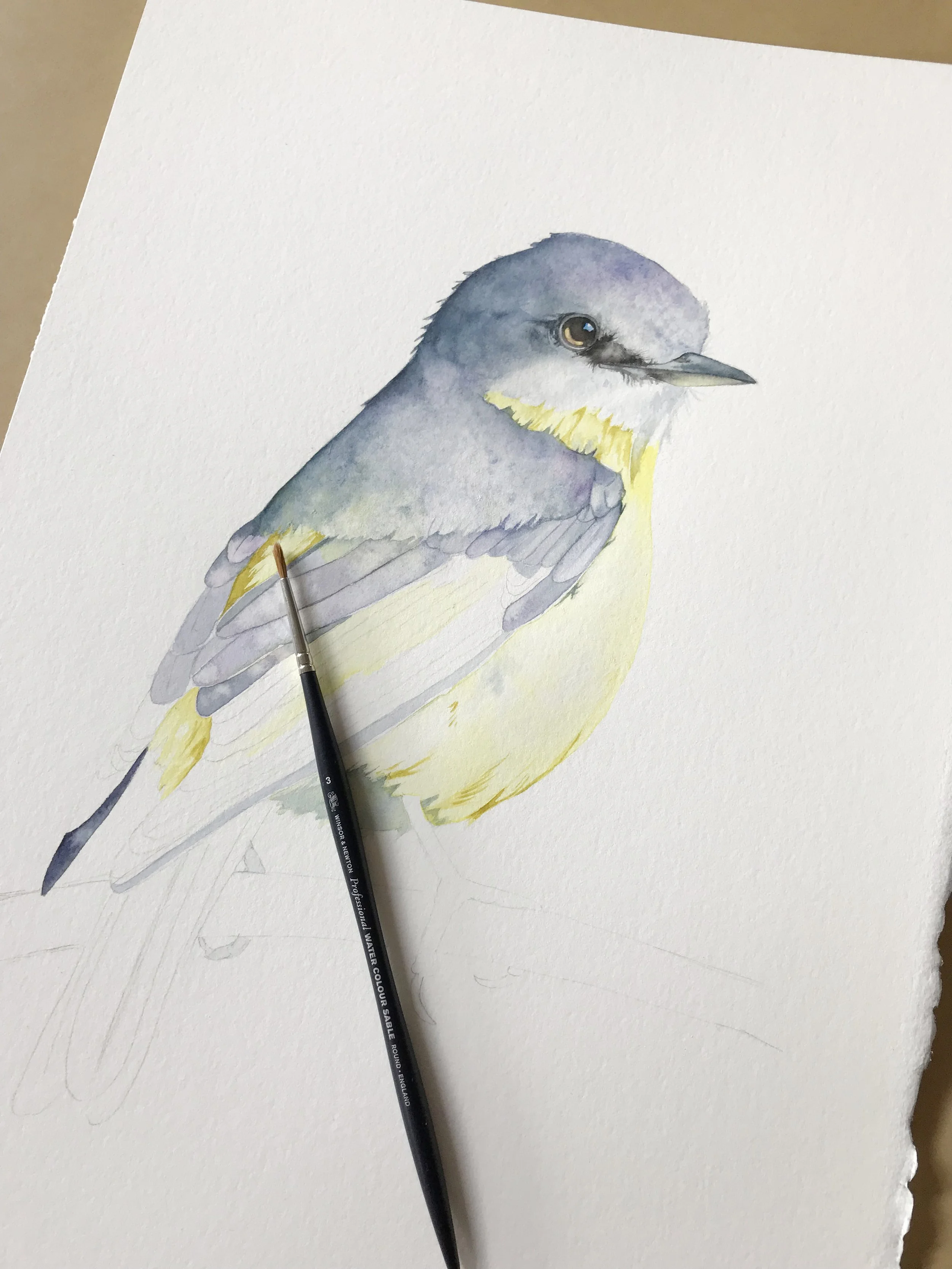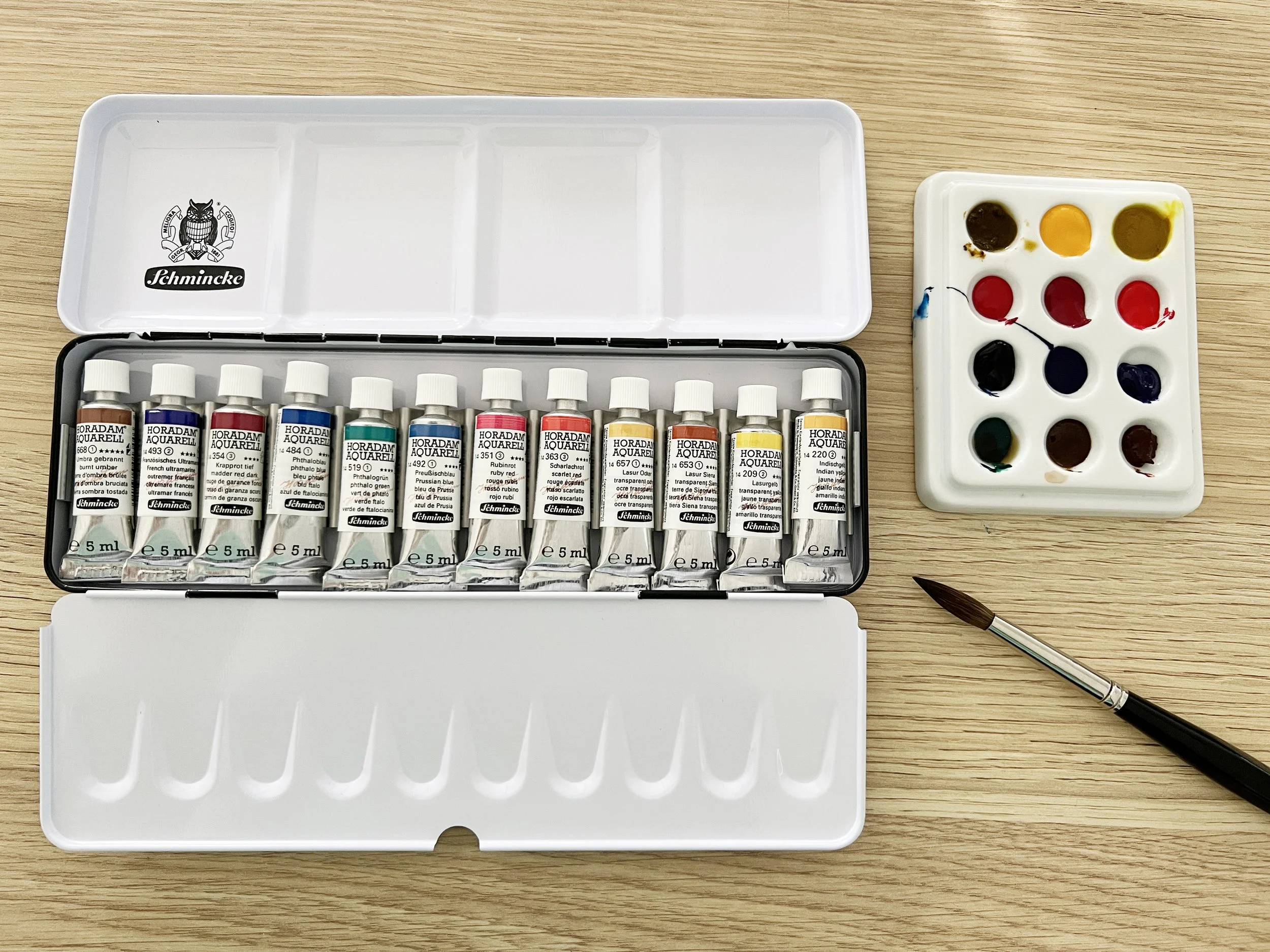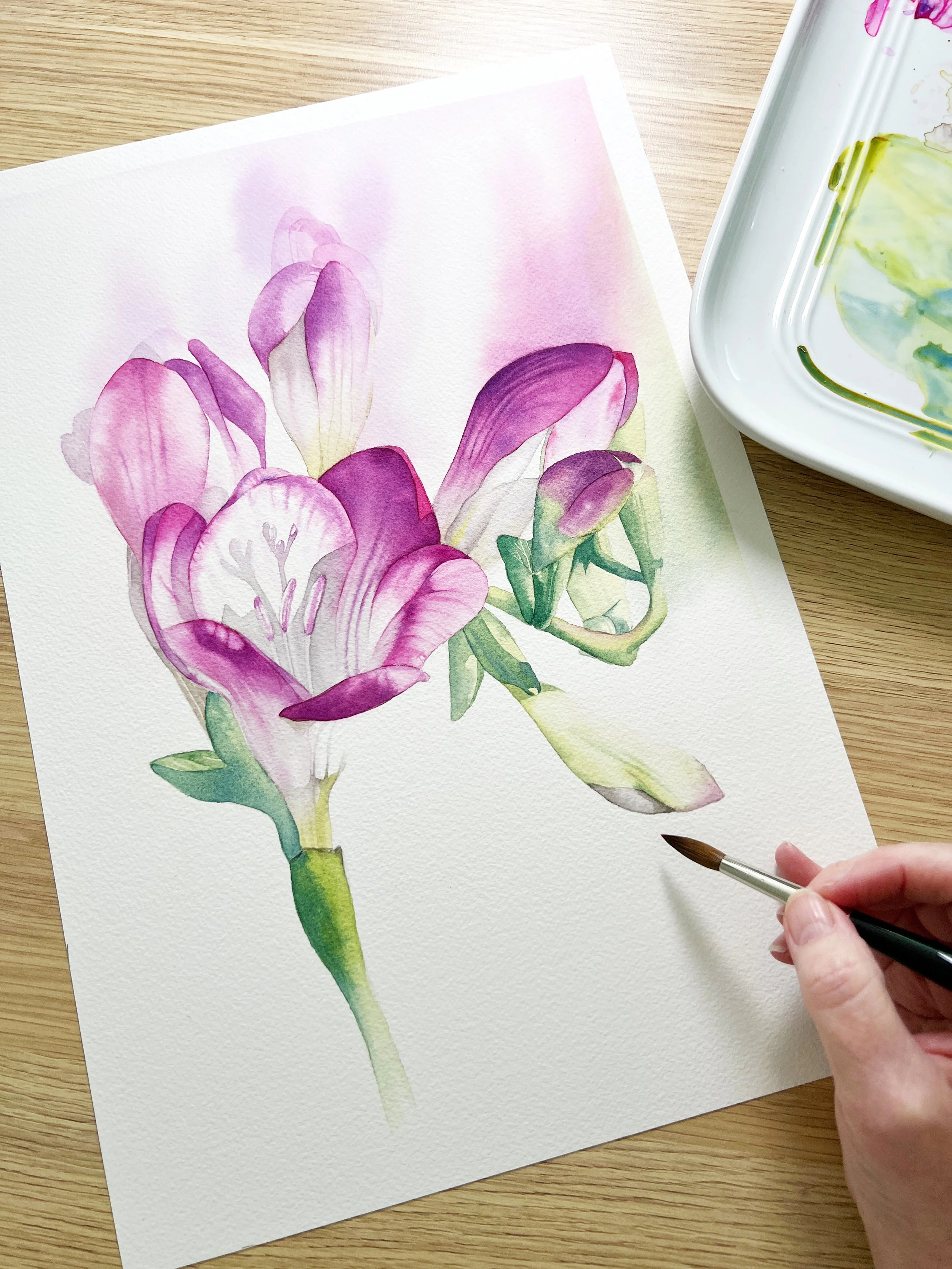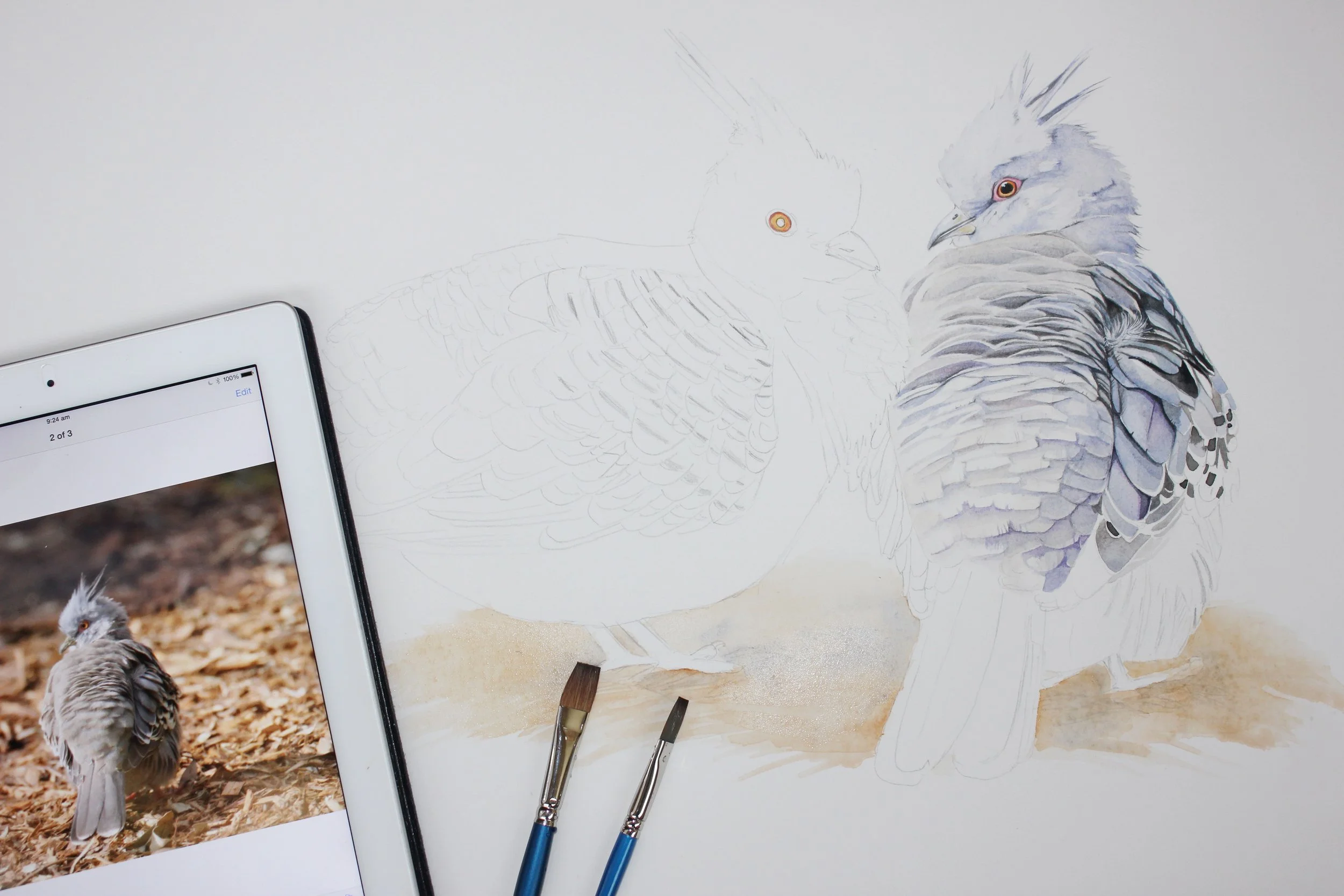One of the biggest challenges in painting white objects is maintaining soft edges, especially in areas where light gradually transitions into shadow. To achieve this, I use a damp brush to soften the edges of my shadows immediately after applying them. This technique helps the transitions look seamless and natural.
Read MoreThese days I almost always mix my own violets because it helps me stick to a limited palette, which naturally creates better colour harmony across the whole painting. I also paint wet on wet a lot, and there's something beautiful about watching the pigments separate on the paper when you mix violet yourself - especially with granulating colours like Ultramarine.
Read MoreI’ve learned the hard way that Louise’s first layers always look way darker in the video than they actually are. Determined to remember this, I mix a watery paint.
I’ve also learned that if your paper is too wet and your paint is too watery, the pigment will migrate to the edges, leaving behind an unwanted harsh line. So, keeping all this in mind, I put paint on the paper—only to immediately want to quit.
Read MoreIf I had to choose just one brush to take with me to a deserted island (assuming there’s watercolour paper on this island, of course), it would be a round brush. These brushes are the workhorses of watercolour painting, and for good reason. With their tapered shape and pointed tip, they offer an incredible range of mark-making possibilities.
You can create everything from whisper-thin lines to broad, sweeping strokes - all with a single brush! The trick is to adjust the pressure: light pressure for fine details, and heavier pressure for broader strokes. Round brushes are fantastic for general painting, detailed work, and fluid line variation. If you’re just starting out, investing in a high-quality round brush with a fine point will serve you well for years to come. Trust me, this is one brush you don’t want to be without!
Read MoreI always begin my floral paintings with a wet-on-wet technique for the initial wash, embracing the unpredictability and softness it brings. This stage is about capturing the ephemeral qualities of petals- their delicacy and the gentle interplay of light and shadow. I wet the paper first, allowing the paint to flow freely, blending seamlessly into the damp surface. Sometimes, I paint each petal individually, while other times I apply a wash over the entire flower at once. It depends on the flower and the level of colour or value variation within each petal.
Read MoreI love using watercolour sketchbooks for small studies. They’re perfect for experimenting with colours and working out compositions before committing to a larger painting. These quick studies not only help me refine my ideas but also build my confidence, knowing I’ve tested my approach beforehand. A journal becomes a safe space to explore and make mistakes without pressure.
Read MoreWith patience and practice, these baubles can become stunning centrepieces for your holiday cards.
Creating your own watercolour Christmas cards is a joyful way to celebrate the season and share your creativity with loved ones. Whether you paint a single bauble or an entire festive arrangement, your handmade card is sure to bring a smile to anyone who receives it.
Read MoreOne of the great things about line and wash is its versatility, but choosing the right surface is key to letting both your ink lines and watercolour washes come to life. In my experience, a few surfaces work best, each bringing out different qualities in the technique. Opt for white paper to really let the transparency of your watercolour art supplies shine.
Read MoreYou’ve probably heard of the rule of thirds - it’s a common compositional guideline that divides your canvas into a grid of nine equal parts, with two horizontal and two vertical lines. You might’ve noticed this grid when using the camera on your phone. The idea is to place your key elements along these lines or at their intersections to create a more balanced, engaging composition.
Read MoreWatercolour’s transparency is what makes it so beautiful, but it’s also where the challenge lies. If you don’t allow each layer to dry completely before adding the next, you can disturb the underlying colours, causing them to mix in ways you didn’t intend. This can lead to muddy colours in your painting, where the vibrancy of the colours is lost.
Read MoreDifferent types of salt can produce different results. Coarse sea salt, with its larger crystals, tends to create bold, dramatic textures, while table salt results in smaller, more delicate starbursts.
It’s fun experimenting with both to see what kinds of patterns they produce on your watercolour paper.
Read MoreColour mixing is essential for any artist because it offers flexibility, enabling you to achieve unique tones and adjust the vibrancy or mood of your work. Whether you're painting landscapes, portraits, or still lifes, the ability to create custom shades gives you more control over your composition and allows for a greater level of depth and harmony in your artwork. It also teaches you how colours interact, deepening your understanding of pigments and how they behave on paper.
Read MoreWhen you're starting out, it's tempting to buy the cheapest supplies available – after all, you’re just experimenting, right? But here's the thing: quality materials can make all the difference in how your artwork turns out and, more importantly, in how you feel while painting.
Read MoreThe choice of watercolour brush can significantly influence the outcome of your washes. A larger mop brush is ideal for laying down a flat wash, as it holds a considerable amount of water and paint, allowing for smooth, even coverage. When applying a graded wash, a smaller round brush can give you more control as you gradually change the intensity of the colour.
Read MoreDraw the Grid: Connect the marks with straight lines, running both horizontally and vertically across the entire surface of your sketch. Be sure to keep your lines light; you want them to be visible but not overpowering. If you’re concerned about the lines showing through, use a lightbox or tape your paper to a window to keep the lines faint.
Some artists also use diagonal lines to help maintain proportional accuracy when transferring more complex images.
Read MoreOne of the most exciting parts of starting a new watercolour piece is getting your sketch ready on the paper. But transferring that sketch, aka tracing a drawing, can be a bit tricky, especially when you want to preserve the delicacy of your watercolour paper.
There are several methods to do this, and today, we’ll explore some popular techniques, discuss which pencils work best, and answer the age-old question: is it “cheating”?
Read MoreIf you enjoy living on the edge, watercolour has you covered. One rogue drop of painting water can send your entire painting into a tailspin of panic. Accidentally drip painting water onto your almost-finished piece? Say goodbye to those crisp lines and hello to unplanned chaos.
It’s like the art equivalent of stepping on a LEGO – sudden, unexpected, and excruciatingly painful. The only difference is, you can’t just toss the painting in the bin… or can you?
Read MoreWhen working on Aquabord panels, just like with watercolour paper, it's important to wait until the paint is completely dry before adding more layers, or things can get messy. Washes on Aquabord often dry patchy, but I’ve learned not to worry too much about that since they can be smoothed out with a damp brush once fully dry.
Read More





